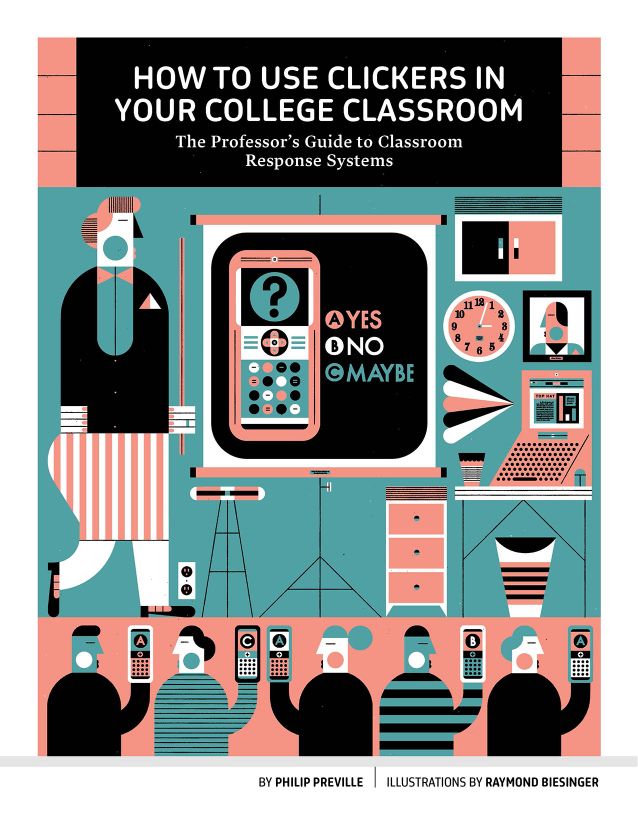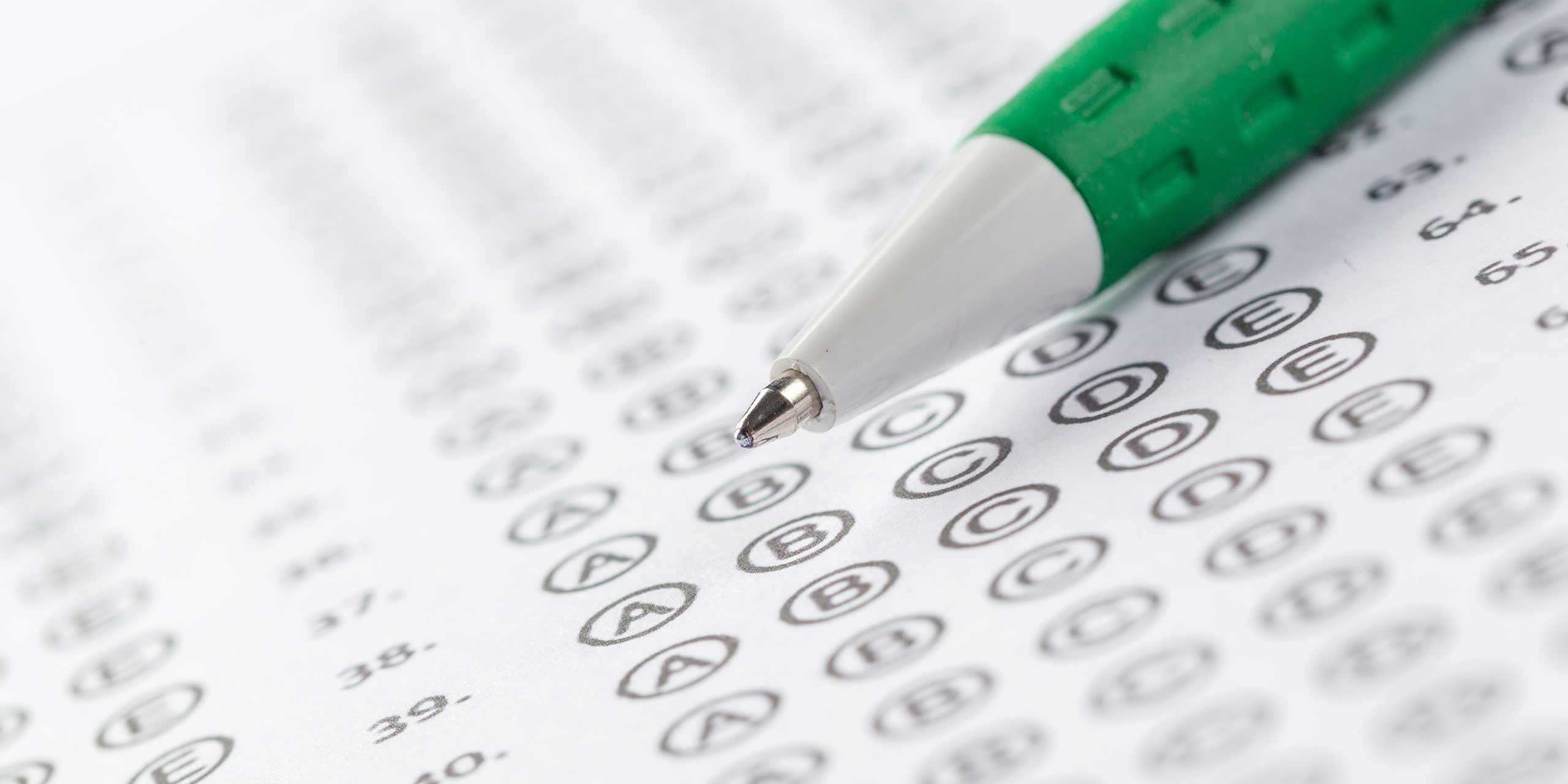Why set a multiple choice test?
For students, a multiple choice test can reduce test anxiety, even if used for summative assessment. And for instructors of large classes, multiple choice tests are much faster to grade than open response or essay questions.
But multiple choice test quizzes, particularly in a higher education context, are often eyed with suspicion—an easy way out that doesn’t test actual learning, just whether the respondents can answer a question.
“You’re never going to encounter multiple choice quizzes on the job somewhere,” says Heather Garcia, an instructional designer at Foothill College, Los Altos Hills, California, who is advocating for replacing with project-based assignments, or assessments based on sets—which she argues are just as rapid to mark.1
On the other hand, Derek Bruff, assistant director of the Center for Teaching at Vanderbilt University and a senior lecturer in Mathematics, says that the correct kinds of multiple choice questions can measure a deeper degree of understanding than ordinary computational or recall questions. “Asking [a multiple choice] question allows me to assess their conceptual understanding and, if the results show that students don’t understand the situation as well as I would like, I can help them think through the topic right then and there during class,” he writes in the Chronicle.2
Furthermore, Jay Parkes, Professor of Educational Psychology at the University of New Mexico in Albuquerque and co-author of Assessing with Multiple Choice Questions in College Classrooms, points out that some professional contexts do indeed have multiple choice questions.
“So many instructors we work with, particularly in professional fields like medicine and law, know that their students are going to encounter these questions on their licensing exam and so they want to make sure they see them in their education,” he explains.3
It’s clear that a multiple choice test isn’t a solution for every instructor and every situation. But with forethought and preparation, it can be used effectively and sensibly in more contexts than you’d initially think, and link with many parts of your curriculum. Here are some ideas you can try.
When is a multiple choice test appropriate?
Our first point of check in for the right place to use a multiple choice test is Bloom’s Revised Taxonomy.4A multiple choice test most smoothly aligns with the levels on the lower half of the pyramid—Remember, Understand, and Apply. “Remember” can be tested with simple recall; “understand” and “apply” can be measured with simply more difficult questions that require the students to stop and make connections before answering. True/false questions are largely confined to Remember and Understand.
Professor Andrew Petto’s strategy for multiple choice questions is called ‘Tell Me Why’ and helps to bring in an upper level of Bloom’s Taxonomy, “Analyze,” into play. After asking a factual question, he follows it with another question that asks students to explain their answer.5
Many professors use multiple choice as an in-class tool to gauge comprehension of the material, as well as part of a wider active learning strategy. Multiple choice quizzes can also be used to establish a baseline level of understanding at the beginning of a class (or the start of a course).
How to write multiple choice test questions
Setting multiple choice tests is a matter of skill and practice. Some tips:
- A multiple choice test question should be “well-constructed with a learning objective and tackle one thing,” explains Parkes, adding that one should avoid humor or wordplay: at best, a joke is distracting, but it can also confuse or cause stress to students whose first language isn’t English or who might not understand the context.
- Format your questions grammatically so that each answer fits into the question. If the question demands a plural answer, all the answers should be plural. Your students shouldn’t need to use logical deductions to remove distractors—they should be able to make a choice based on what they know, understand, or can apply or analyze.6
- Eliminate guessing by writing sensible incorrect answers (or “distractors”). Each answer should be a plausible response to the question. In math, the distractors could be incomplete answers or be the result of forgetting a step. In history, perhaps somebody who signed but did not contribute to a treaty. Base them on misconceptions or misdirections, and remember: wrong answers can give you more information about your classroom than right ones.
- Where to put your distractors? It’s difficult for human beings to achieve true randomization by ourselves; it’s absolutely a job you should delegate to a computer. When deciding which of your answers should be correct, use a random number generator—you can generate lists at www.random.org.
- As well as pairing questions together to test your students’ analysis as per Petto’s advice above, you can also assess other higher-order thinking skills such as creation and application. Ask students to use the concept in a way that students would not have encountered before, or give them material in a new format (such as a map), along with a series of questions that test the appropriate cognitive skills.7
Multiple choice test question strategies
As part of formative assessment, there are several strategies you can use in the way you assign and read multiple choice questions.
- Get a quick measure of the effectiveness of your lesson by asking the same multiple choice test assignment twice; once before instruction and again afterwards. Information retrieval will not only help solidify the new concepts for your students and give them a sense of progress, but also let you see what gaps are remaining in your students’ knowledge (which, again, is why wrong answers are just as important as correct ones.)
- You may be able, depending on time and technology, to ask questions anonymously. While clearly this can only be done for formative assessment, giving the students the opportunity to answer the question without revealing their identity will help you tackle embarrassing or politically charged topics.
- Also consider segmenting: comparing the responses of one question with another, and looking at how the two responses stack up. If you ask your students two different multiple choice questions, then slice the replies based on the answers to both questions, this will give you insight into any correlation between the knowledge or opinions that have been expressed in the responses.
Conclusion
If you are looking for some more ideas on how to implement multiple choice test questions, the latest technology you can use to make them more effective, and some more real-life examples of their use, register here to download our free e-book, How to Use Clickers in Your College Classroom.

Get a better handle on classroom response systems by downloading our new free e-book, How to Use Clickers in Your College Classroom
Higher education journalist Philip Preville has interviewed several professors about their real-life techniques and methods for creating questions.
Fill out this simple form to get your copy.
References
- Young, J. (2018, May 11). Should Professors (a) Use Multiple Choice Tests or (b) Avoid Them At All Costs? Retrieved from https://www.edsurge.com/news/2018-05-10-should-professors-a-use-multiple-choice-tests-or-b-avoid-them-at-all-costs.
- Bruff, D. (2010, March 5). Multiple Choice Questions on Exams. [Blog post] Retrieved from https://www.chronicle.com/blogs/profhacker/multiple-choice-questions-on-exams/23020.
- Stachowiak, B., Parkes, J., Zimmaro, D. (2017, June 1) Learning and Assessing with Multiple Choice Questions. [Podcast] Retrieved from https://teachinginhighered.com/podcast/learning-assessing-multiple-choice-questions-college/#transcriptcontainer.
- Morris, E. (2018, November 1) Bloom’s Taxonomy Questions: Usage in Formative Assessment. [Blog post] Retrieved from https://tophat.com/blog/blooms-taxonomy-questions/
- Petto, A. (2018, August 9) The Hidden Powers of Classroom Multiple Choice Questions. [Blog post] Retrieved from https://tophat.com/blog/hidden-powers-multiple-choice-questions/
- Young, J. (2018, May 11). Should Professors (a) Use Multiple Choice Tests or (b) Avoid Them At All Costs? Retrieved from https://www.edsurge.com/news/2018-05-10-should-professors-a-use-multiple-choice-tests-or-b-avoid-them-at-all-costs.
- 7. DiBattista, D., Kurzawa, L. (2011). Examination of the Quality of Multiple-choice Items on Classroom Tests. The Canadian Journal for the Scholarship of Teaching and Learning, 2 (2). http://dx.doi.org/10.5206/cjsotl-rcacea.2011.2.4
Related pages
Learn how easy it is to make a test with Top Hat


